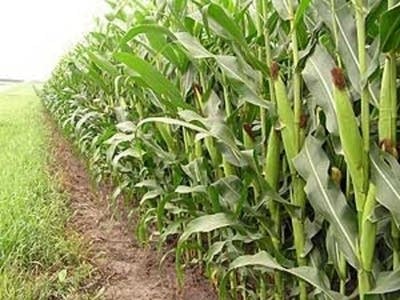Fall harvest looks stronger than expected
Go Deeper.
Create an account or log in to save stories.
Like this?
Thanks for liking this story! We have added it to a list of your favorite stories.

The latest estimate says U.S. farmers will harvest 13.3 billion bushels of corn, the nation's largest crop ever. Minnesota will produce about 10 percent of that, despite areas of severe drought this year.
Farmer Beverly Welu says dry weather cut into the corn crop she and her husband grow in southern Minnesota. She's says while other parts of the state got soaked in August, her farm got only a little rain.
"Our area here, we missed it," says Welu. "It could get as dark as it could get in the sky, and a couple drops would fall, that was it."
The August rains did help many parts of the state.
Turn Up Your Support
MPR News helps you turn down the noise and build shared understanding. Turn up your support for this public resource and keep trusted journalism accessible to all.
The USDA now estimates Minnesota fields will average 158 bushels of corn an acre -- up two bushels from a month ago.
The late summer rains also boosted the soybean crop. The USDA report predicts an average yield of 42 bushels an acre, compared to 40 in their August report.
Despite the optimistic predictions, farmers in parts of central and northern Minnesota qualify for federal drought assistance.
With yields expected to vary widely from field to field, the best news for farmers right now may be the grain markets.
Usually a bumper crop means lower grain prices. But even with a record U.S. corn crop predicted, prices are moving higher. Corn went up about 15 cents a bushel after the USDA estimate was released -- an increase of 5 percent.
Grain analyst Mark Schultz with Northstar Commodity in Minneapolis says ethanol demand is one factor for the rise. He says another reason is weather problems in other countries. He says those concerns have reduced world grain supplies.
"We look at what the size of our crop is in this country, but around the globe everybody else continues to have lower and lower crop potential," says Schultz. "Which means they've got to go source corn from someplace else. Virtually the only place to get it now is from the United States."
That world demand has helped drive the price of corn and other grains up. The most notable rise has been in the wheat market. Wheat prices in the last week reached an all-time high, though they fell sharply in trading on Wednesday.
The rising grain markets are something farmers watch carefully, but their attention is shifting. The harvest is just starting, and farmers will be in the fields finding out the true size of this year's crop.
Dear reader,
Political debates with family or friends can get heated. But what if there was a way to handle them better?
You can learn how to have civil political conversations with our new e-book!
Download our free e-book, Talking Sense: Have Hard Political Conversations, Better, and learn how to talk without the tension.




